Kafe Smictiric considers to what extent The iceman is a conceptual artist and whether aim’s painting, Quill is a work of admiration or satire.
Is aim simply a painter of a conceptual artist? Perhaps he’s more of a recorder of the conceptual performance artist, The Iceman. Some say that that performance artist was more of a chaos theorist! He had more equipment than installationist Mike Nelson.
The Iceman claims that he addresses structures of measurement, normativity, and affect. He trades blocks, claiming to show social directions. He uses aesthetics to restrict, release and shape ice-blocks. These are implicated in constructed space. I think that’s a formal way of saying he created complete mayhem whenever he melted a Block-this included a slippery surface which caused others, sometimes dangerously to slip and side around the performance space .Not to mention the range of equipment he employed.
Aim’s latest painting, Quill, perhaps pays homage to Roman Opalka. But is it tongue in cheek? The Iceman was never rigorous or disciplined and aim in turn paints quite erratically, by choice or some say inadequacy. The Iceman has the same sort of commitment as Opalka in melting Blocks of ice but in not such a methodical way ,even if he did number several. But then he deliberately started un-numbering blocks. Aim seems to make a virtue out of over-using cloisonnist effects and pentimenti galore. Look at the recent “Funnel”painting and you will notice all sorts of effects including scumbling, impasto and passage.
The Iceman considers how spatial and material conditions produce effects and the ways the organising of the block in turn reflects the disorganisation of the mind. The block is restricted by space, responding to limitations, self-perceiving. This echoing – these turns of translations between space and body, mind and other – speak of reflexivity between us and the environment: a Block dance.
The block performs a strange act of resuscitation. When people re-describe older Blocks they often mention details that were hardly intended. The blocks exist in people’s minds in a state of creative misremembering. The iceman never quite knew how his support structure would all go back together again-that’s something everyone agrees on plus his persistence in re-erecting the structure.
The Iceman was not averse to selling art, but always made the commercial element quasi absurd, for example when doing fax copies of a present block and then trying to sell them to audience members. If there wasn’t much interest, he would give them away anyway, lamenting the cost of fax paper. His fax machine became almost as constant as his Duck! He has even produced a book “Melt It! The Book of The Iceman”. He was seen recently in full sales mode at a club in Boscombe called Chaplin’s. He sold three books apparently but failed to get an auction bid off the ground for a painting. This self-conscious achievement of failure is all grist to the Iceman event. The audience felt sorry for him and he came close to realising a sale through exposing his vulnerability.
The Iceman always gave space for the audience’s imaginations to play, too re whatever the block was signifying or in what way it was behaving. The iceman’s motto could indeed be “If there’s a really difficult way of doing things, I will find it!”
Conceptual art is art for which the idea (or concept) behind the work is more important than the finished art object. In a way the Iceman gets rid of the object so there is no finished item, apart from the photo, sometimes. The paintings came at a later stage.
Aim too plays with language in some of his paintings, in a way vaguely related to Joseph Kosuth Marcel Duchamp is often seen as an important forefather of conceptual art, and his readymade Fountain of 1917 cited as the first conceptual artwork. But The Iceman’s blocks go a stage further because they disappear.
Aim’s work can all too easily not be bought or sold! Yet, he is even having a formal painting exhibition at the Gugg Gallery in July/August 2023,actually a farm in Stalbridge, Dorset.[How appropriate for the fertile Iceman to exhibit and irrigate in a rural/agricultural setting]. Does the Iceman reflect wider dissatisfaction with society and government policies, for example like Joseph Beuys’s social sculptures. I don’t think anything so ordered. Kosuth’s works are frequently self-referential. He remarked in 1969:
“The ‘value’ of particular artists after Duchamp can be weighed according to how much they questioned the nature of art.” In a funny way, aim conveys that thought process as well but there is often raw emotion both in The iceman performance and also on aim’s canvases, or should I say mounting boards, because that is what he primarily employs.
The Iceman, in performance, created mantras when he repeated artist names and philosophers like Sigmund Freud and Ludwig Wittgenstein, Gilbert and George, Andy Warhol. Was this a reference to his lineage?
A bit like Simon Starling, The Iceman’s Block explores the concept of value and the way in which it can be attributed to both an object and a work of art, and thus decree its change in value.
Starling creates works that transform existing objects into something new, subject to the rules of a new market. Employing a procedure that we might define as the reverse of that practised by Marcel Duchamp when he took an everyday bottle rack and turned it into a work of art, Starling utilizes elements that already have an acquired value as design objects and then completely reworks them, converting them into something different. The Iceman goes a stage further and changes elements!
The field of investigation for The Iceman is always the Block and the processes that lie behind its production, while its transformation is tied to the place where it was created or to the exhibition site where the artist has been invited to work, almost as if he were following a sort of geopolitics of the object, which leads it toward continuous and new migrations. The Block has an evocative path or journey!
The Iceman goes beyond measurement and perception of the passing of time. In entirely different ways, the artists Roman Opałka and Darren Almond explore the very essence with which we grasp the progression and flow of time itself. Touching on the concepts of the finite and infinite, their works exist on the border of the perceptible, fading in and out of existence. The Iceman too, in a sense, plays with time, even if in a much more simple,rough and ready way.
‘The end is defined by the death of the artist. Death as an instrument (organ) of finitude, of the work of a lifetime, in the form of the Détails, the paintings that branch off from the single, overall work: Opałka 1965/1-∞.’— Roman Opałka
I suppose The Iceman too will stop melting Blocks one day! But he doesn’t share the meticulous changes that Opalka developed eg the idea of blanc merite where the numbers would gradually become less clearly visible and would gradually lead him to a completely white canvas as he introduced one per cent more white pigment into each successive Détail.
Documenting this progression through photographic self-portraits, one for each canvas that he worked on, as well as recording his voice as he counted, Opałka surpassed his goal of an all-white painting when he exceeded 5 million in 2008. There-on forward counting in a realm of white, his death ultimately determined the last number that he would paint, as he reached 5,607,249 when he passed away in 2011. The Iceman’s polaroids are more obviously an instant capture of a moment in time.
Aim shows Intelligence of hand. His art percolates inside but operates outside, almost suggesting ancestral ideas , entwined with ice-blocks in Nature. You could say aim shapes opacity and makes small monumental totems reflecting a Duality open/closed. This is clearly suggested when The Iceman, in performance, pushes his block forward and back in a sort of pulsating yin/yang way, as if demonstrating it breathing
This perpetually to be fragmented iceblock possibly suggests a self-transformative function as a portal with multiple layers of possibility. Is The Iceman actually aiming for zero, outside a culture of accumulation. There are layers of meaning in each block , where the shift in shape of object change expectation.
All I know is that this work “Quill” has a strange sort of beauty with the contrast between wave effects and block progression. Similarly the textured painting, “Funnel”, almost has a touch of Henri Matisse about it. The cartoon nature of aim’s paintings has resulted in a big interest from nft collectors but apparently aim is not prepared to enter into that world.
In this article, I have tried to marry the interpretation of both The Iceman’s performance work and the visual art of aim, which came later, after much Block work. I think aims paintings stand up to scrutiny in their own right, even if the viewer had never been aware of the actual performance artist, The Iceman.
Kafe Smictiric [art critic]

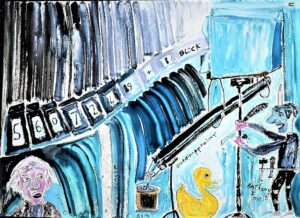
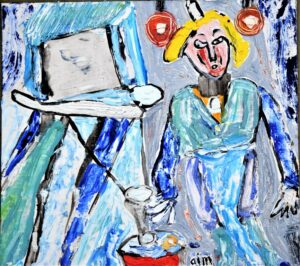

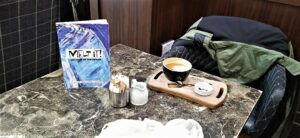




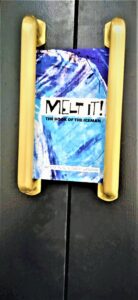


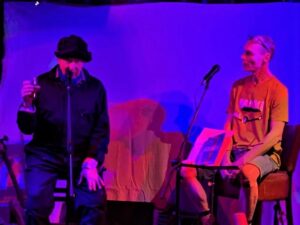
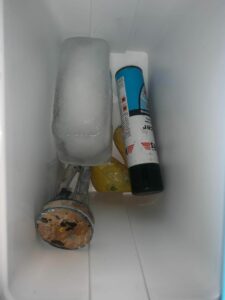
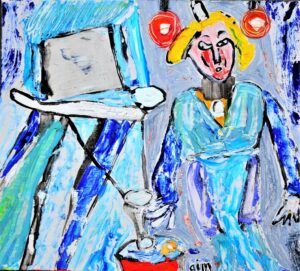

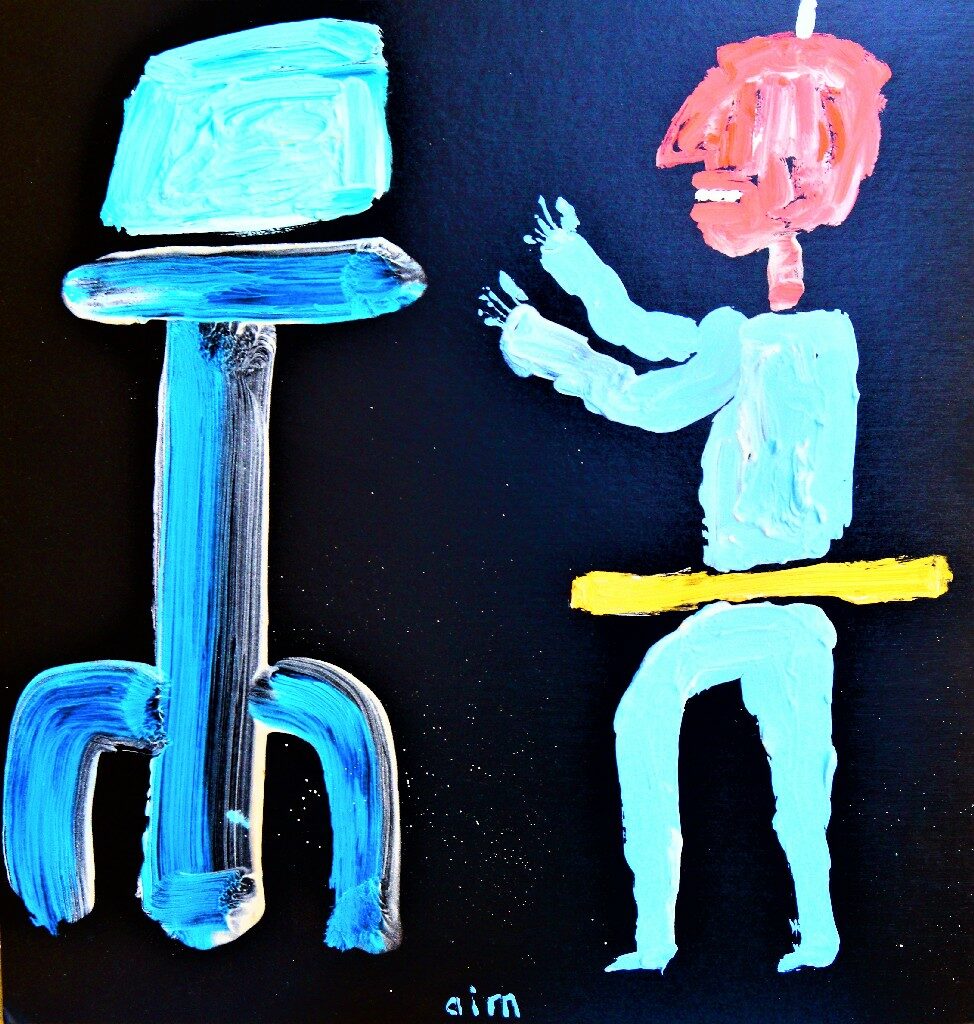
Recent Comments